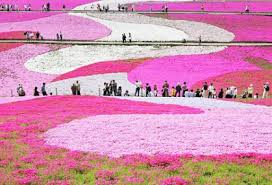As much as I like looking at flowers, I've always been more of a practical gardener. Planting flowers around my house/apartment seems like such a waste of space when fruits, vegetables, and herbs could be grown instead. Last summer I successfully transformed a portion of my half-dead garden into a mini vegetable farm that included tomatoes, jalapenos, onions, dill, parsley, mint, chives, and edamame. That being said, I do appreciate (other people's) well-tended gardens especially the ones that strive for perfection.


The Ashikaga Flower Park in Japan is arguably one of the most magnificent collection of flowers that I've ever seen. Just Google the words and an abundance of unbelievably beautiful florals will flood your screen. Although I did visit Kyoto a few years ago, I unfortunately could not explore this part of the country. The more I learn about beautiful places around the world, the less I understand people who never travel. Hopefully one day I'll get to see this awesomely purple park which seems like it should be protected by UNESCO or something.
For information about this wonderful park: Ashikaga Flower Park







